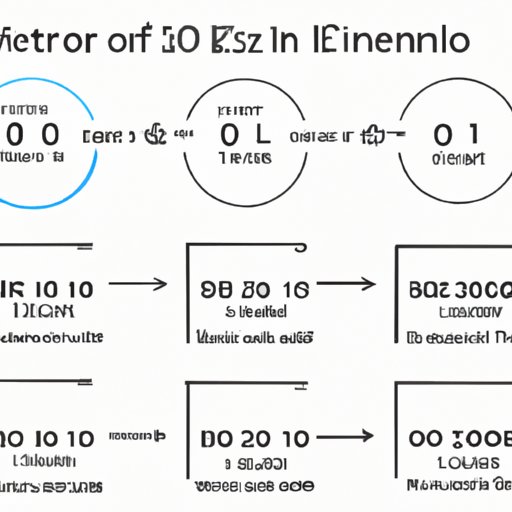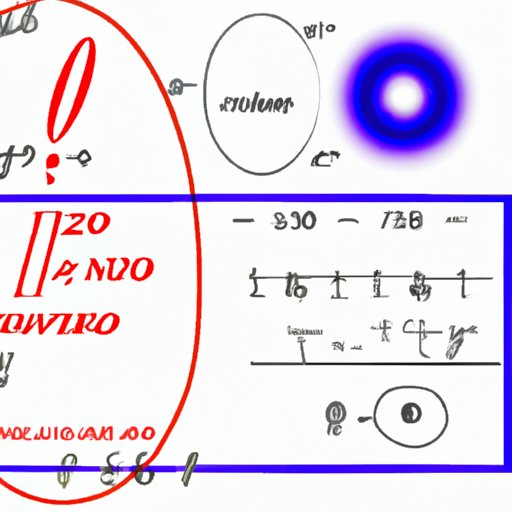Introduction
Zero is a fundamental concept in mathematics, used in calculations and equations to represent nothingness or absence. It is one of the most important numbers in our lives, yet it is often taken for granted as something that has always been around. But when was zero invented?
In this article, we’ll explore the history of the invention of zero, from its ancient origins in the Indian and Babylonian cultures to its use in modern times. We’ll investigate the historical context of the invention of zero, including social and cultural factors, and examine common myths to uncover the truth.
History of the Invention of Zero
The concept of zero has its roots in ancient civilizations. The idea of “nothingness” appears in the writings of ancient Greek philosophers such as Parmenides and Democritus. However, it was not until the 3rd century BCE that the concept of zero began to take shape.
Ancient Origins
The first recorded use of zero was in ancient India, where it was used for counting and calculations by the 5th century BCE. The ancient Indian mathematicians were likely inspired by the concept of “sunya” or “void”, which was present in Hindu scripture and philosophy. This concept of nothingness was represented by a dot, and later evolved into the number 0.
Contributions of Ancient Indian Mathematicians
The ancient Indian mathematicians developed various methods of representing and manipulating zero. They were the first to use place value notation, where the position of the digit determined its value. For example, the number 10 would be written as 1 followed by a zero, indicating that the zero had a place value of 10. This system allowed them to perform complex calculations with large numbers.
Influence of Babylonian Mathematics
The ancient Babylonians also made contributions to the development of zero. They used a sexagesimal (base 60) numerical system, which included a placeholder symbol for empty columns. This symbol was similar to the modern zero, and is thought to have influenced the Indian system.

A Timeline of the Development of Zero
Let’s take a look at a timeline of the development of zero over the centuries.
Early Use in India and Babylonia
As mentioned above, the earliest known use of zero dates back to ancient India and Babylonia. The Indians were the first to use place value notation, while the Babylonians used a placeholder symbol for empty columns.
Use in Europe
The concept of zero spread to Europe from India via the Arab world. By the 9th century, Arabic numerals were being used in Europe, and by the 12th century, the use of zero was widespread.
Mathematical Advances Leading to Its Use in Modern Times
By the 15th century, mathematicians had begun to understand the mathematical properties of zero and its use in equations. This led to advances in mathematics, such as calculus, which paved the way for its use in modern times.

Investigating the Historical Context of the Invention of Zero
In order to fully understand the invention of zero, it is important to examine the historical context in which it occurred. Let’s take a look at the social and cultural factors that may have influenced its development.
Social and Cultural Factors
At the time of the invention of zero, many cultures were transitioning from oral to written traditions. This shift from an oral to a written language required new ways of counting and calculating, and thus created the need for symbols to represent abstract concepts like “nothingness”.
Economic Implications
The invention of zero also had economic implications. With the ability to reliably calculate large numbers, merchants were able to keep accurate records of their transactions. This allowed them to compete more effectively in the marketplace, and increased their profits.

Debunking Myths About the Invention of Zero
There are many myths and misconceptions surrounding the invention of zero. Let’s take a look at some of these myths and uncover the truth.
Common Misconceptions
One common misconception is that the ancient Greeks invented zero. While they contributed to the development of mathematics, the concept of zero was not developed until much later. Another myth is that zero was invented in the Middle Ages. In fact, the concept of zero was already in use in India and Babylonia by the 5th century BCE.
Historical Evidence
The historical evidence suggests that the concept of zero was developed independently in both India and Babylonia. It then spread to Europe via the Arab world, and was further developed by mathematicians in the Middle Ages.
Conclusion
To conclude, the invention of zero was a major milestone in the history of mathematics. It has revolutionized the way we think about numbers and calculations, and has had far-reaching implications in economics and other fields. Despite common misconceptions, the historical evidence shows that zero was invented independently in both India and Babylonia and gradually spread throughout the world.
It’s hard to imagine a world without zero, but without the contributions of ancient mathematicians, we might not have this vital concept today. From its ancient origins to its use in modern times, the invention of zero has played an essential role in the development of mathematics and our understanding of the world.
(Note: Is this article not meeting your expectations? Do you have knowledge or insights to share? Unlock new opportunities and expand your reach by joining our authors team. Click Registration to join us and share your expertise with our readers.)
